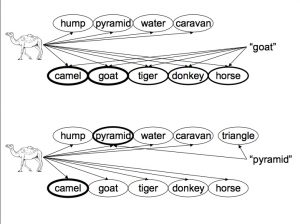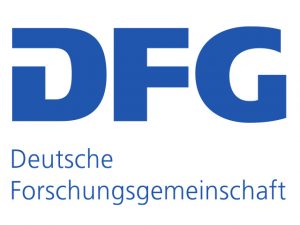The investigation of semantic context effects has served as a valuable tool in investigating mechanisms of language production. Classic semantic interference effects from the picture-word interference, semantic blocking, and speech error elicitation paradigms have provided influential support for a competitive lexical selection mechanism. However, recent interest in semantic facilitation effects from non-categorical semantic relations has stimulated a discussion on whether or not context effects reflect competition during lexical selection. Together with my colleague Rasha Abdel Rahman, we have proposed a framework of lexical selection by competition that is sensitive to the activation of lexical  cohorts. Support for our Swinging Lexical Network hypothesis is drawn from a variety of ‘unexpected’ interference effects, for example from semantic associates. We suggest that by adopting the assumptions of our proposal we can parsimoniously account for a majority of the discussed semantic facilitation and interference.
cohorts. Support for our Swinging Lexical Network hypothesis is drawn from a variety of ‘unexpected’ interference effects, for example from semantic associates. We suggest that by adopting the assumptions of our proposal we can parsimoniously account for a majority of the discussed semantic facilitation and interference.
Relevant Publications:
Lin, H.-P., Kuhlen, A. K., Melinger, A., Aristei, S., & Abdel Rahman, R. (2021). Concurrent semantic priming and lexical interference for close semantic relations in Blocked-cyclic picture naming: Electrophysiological signatures. Psychophysiology. https://onlinelibrary.wiley.com/doi/epdf/10.1111/psyp.13990
Abdel Rahman, R. & Melinger, A. (2019). Semantic processing during language production: An update of the swinging lexical network. Language, Cognition & Neuroscience. DOI:10.1080/23273798.2019.1599970
Melinger, A. & Abdel Rahman, R. (2019). To re-tune or not to re-tune. Comments on the flexible criterion. Cognitive Neuropsychology, doi.org/10.1080/02643294.2018.1562886
Rose, S.B., Aristei,S., Melinger, A., & Abdel Rahman, R. (2018). The closer they are the more they interfere: Semantic similarity of word distractors increases competition in language production. Journal of Experimental Psychology: Learning, Memory, & Cognition. doi.org/10.1037/xlm0000592
Open Science Collaboration. (2015). Estimating the reproducibility of psycholgocial science. Science, 349(6251). DOI: 10.1126/science.aac4716
Melinger, A., Branigan, H., & Pickering, M. (2014). Parallelism in Language Production. Language, Cognition, & Neuroscience, 29(6), 663-683. doi: 10.1080/23273798.2014.906635
Melinger, A. & Abdel Rahman, R. (2013). Lexical selection is competitive: evidence from indirectly activated semantic associates during picture naming. Journal of Experimental Psychology: Learning, Memory and Cognition, 39(2), 348-364. doi: 10.1037/a0028941
Aristei, S., Abdel Rahman, R., & Melinger, A. (2011). Electrophysiological chronometry of semantic context effects in language production. Journal of Cognitive Neuroscience, 23, 1567-1586. doi: 10.1162/jocn.2010.21474
Abdel Rahman, R., & Melinger, A. (2011). The dynamic microstructure of speech production: Semantic interference built on the fly. Journal of Experimental Psychology: Learning Memory and Cognition, 37, 149-161. doi: 10.1037/a0021208
Abdel Rahman, R., & Melinger, A. (2009). Dismissing lexical competition does not make speaking any easier: A rejoinder to Mahon and Caramazza (2009). Language and Cognitive Processes, 24(5), 749-760. doi:10.1080/01690960802648491
Abdel Rahman, R., & Melinger, A. (2009). Semantic context effects in language production: A swinging lexical network proposal and a review. Language and Cognitive Processes, 24(5), 713-734. doi: 10.1080/01690960802597250
Abdel Rahman, R., & Melinger, A. (2008). Enhanced phonological facilitation and traces of concurrent word form activation in speech production: An object naming study with multiple distractors. Quarterly Journal of Experimental Psychology, 61, 1410-1440. doi:10.1080/17470210701560724
Abdel Rahman, R., & Melinger, A. (2007). When bees hamper the production of honey: Lexical interference from associates in speech production. Journal of Experimental Psychology: Learning, Memory and Cognition, 33(3), 604-614. doi: 10.1037/0278-7393.33.3.604
Melinger, A., & Abdel Rahman, R. (2004). Investigating the interplay between semantic and phonological distractor effects in picture naming. Brain and Language, 90, 213-220. doi: 10.1016/S0093-934X(03)00434-6
This research has been supported by: 
